10 Best Carbon Reduction Offsets (Complete 2024 List)
Affiliate Disclosure
Hey fellow impactful ninja ?
You may have noticed that Impactful Ninja is all about providing helpful information to make a positive impact on the world and society. And that we love to link back to where we found all the information for each of our posts.
Most of these links are informational-based for you to check out their primary sources with one click.
But some of these links are so-called "affiliate links" to products that we recommend.
Why do we add these product links?
First and foremost, because we believe that they add value to you. For example, when we wrote a post about the environmental impact of long showers, we came across an EPA recommendation to use WaterSense showerheads. So we linked to where you can find them. Or, for many of our posts, we also link to our favorite books on that topic so that you can get a much more holistic overview than one single blog post could provide.
And when there is an affiliate program for these products, we sign up for it. For example, as Amazon Associates, we earn from qualifying purchases.
What do these affiliate links mean for you?
First, and most importantly, we still only recommend products that we believe add value for you.
When you buy something through one of our affiliate links, we may earn a small commission - but at no additional costs to you.
And when you buy something through a link that is not an affiliate link, we won’t receive any commission but we’ll still be happy to have helped you.
What do these affiliate links mean for us?
When we find products that we believe add value to you and the seller has an affiliate program, we sign up for it.
When you buy something through one of our affiliate links, we may earn a small commission (at no extra costs to you).
And at this point in time, all money is reinvested in sharing the most helpful content with you. This includes all operating costs for running this site and the content creation itself.
What does this mean for me personally?
You may have noticed by the way Impactful Ninja is operated that money is not the driving factor behind it. It is a passion project of mine and I love to share helpful information with you to make a positive impact on the world and society. However, it's a project in that I invest a lot of time and also quite some money.
Eventually, my dream is to one day turn this passion project into my full-time job and provide even more helpful information. But that's still a long time to go.
Stay impactful,
Reducing global levels of atmospheric carbon dioxide (CO2) is important to ensure a sustainable planet for future generations. Partnered with carbon offsets, carbon reduction could play a crucial role in mitigating climate change. So, we had to ask: what are the best carbon reduction offsets?
The best carbon reduction offsets are offered by Carbonfund, REDD.plus, and Sustainable Travel International which offer REDD+, energy efficiency, and blue carbon offset projects. In addition, DelAgua, Wildlife Works, and South Pole also specialize in carbon reduction.
Keep reading to learn more about carbon reduction offsets, how these carbon offset projects work, and what their respective offsetting costs are. At the end of the article, we’ll also share with you how effective carbon reduction offsets are, what their pros and cons are, and how these offsets can help mitigate climate change.
Here’s What All the Best Carbon Reduction Offsets Have in Common
Carbon offsets are reductions in carbon emissions that are used to compensate for carbon emissions occurring elsewhere. They are measured in tons of CO2 equivalents and are bought and sold through international brokers, online retailers, and trading platforms on what is known as the global carbon offset market.
“Carbon offset: a way for a company or person to reduce the level of carbon dioxide for which they are responsible by paying money to a company that works to reduce the total amount produced in the world, for example by planting trees”
Oxford Dictionary
Carbon offsets are trade-offs, whereby companies receive credits for financially supporting external projects that reduce emissions.
Carbon reductions refer to the decrease of carbon emissions as a result of activity between two points in time. Typically, an individual or organization reduces greenhouse gas (GHG) emissions via efficiencies.
“Emission reduction: The act or process of limiting or restricting the discharge of pollutants or contaminants, such as by setting emission limits or by modifying the emission source.”
United Nations Environment Programme
In the context of carbon credits, carbon emission reductions are quantified relative to a baseline scenario, or the business-as-usual carbon emissions.
Carbon offsets that can be classified as carbon reductions include:
These Are the 10 Best Carbon Reduction Offsets in 2024
Below are our favorite carbon reduction offsets (you can click on their link to directly jump to their section in this article):
| Carbon Reduction Offsets | Quick Facts |
| Carbonfund | About: Purchases support clean cookstoves, water filtration, waste co-generation, and tailpipe emissions reduction energy-efficiency projects as well as REDD+ projects. Costs: $16.25-$17.16 per 1,000kg of CO2 for individuals, $390-$1,560 per year for small businesses, determined after initial contact for large businesses |
| REDD.plus | About: Carbon offset purchases support UNFCCC-verified REDD+ projects around the globe. REDD.plus is a central registry and exchange for REDD+ Result Units, a type of carbon credit. Costs: $16 per ton of CO2 |
| Sustainable Travel International | About: Carbon offset purchases support the Katingan Mentaya Blue Carbon Project. This project protects and restores 370,000+ acres of peat swamp forest in Borneo. Costs: $16 per 1,000kg of CO2 |
| DelAgua | About: Purchases support the Rwandan clean cookstoves energy-efficiency carbon offset project. Costs: Costs are determined after initial contact |
| Wildlife Works | About: Carbon offset purchases support third-party certified carbon offset projects including The Kasigau Corridor, Mai Ndombe, and Southern Cardamom REDD+ projects in Kenya, Cambodia, and Colombia respectively. Costs: $20 per ton of CO2 |
| South Pole | About: Purchases support energy-efficiency carbon offset projects including clean cookstoves in China, Mali, and Rwanda. Costs: Costs are determined after initial contact |
| InfiniteEARTH | About: Carbon offset purchases support the third-party certified Rimba Raya Biodiversity Reserve REDD+ project in Borneo. Costs: Determined after initial contact |
| Ecologi | About: Purchases support energy-efficiency carbon offset projects including efficient cookstoves in Kenya, Tanzania, Zambia, Ghana, and Honduras. Costs: $6.04 per 1,000 kg of CO2 offset |
| Biofilica | About: Carbon offset purchases support third-party certified REDD+ projects that protect six areas of the Brazilian Amazon rainforest. Costs: Determined after initial contact |
| myclimate | About: Carbon offset purchases support the Blue Forests for Coral Reef Protection project, which protects over 2,400 acres of mangrove forests in Madagascar. Costs: $23-$30 per 1,000kg of CO2 |
Carbonfund: Go Carbon Neutral
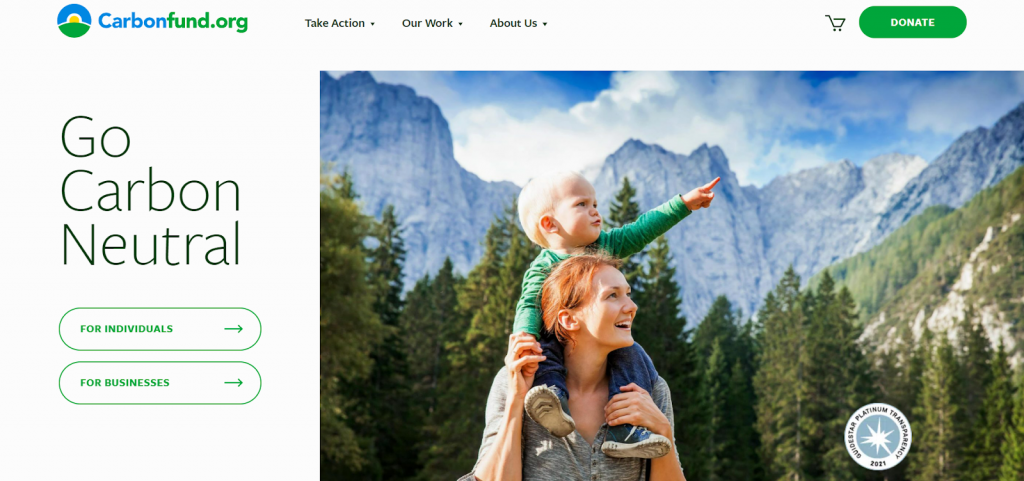
Carbonfund was founded in 2003 by Eric Carlson to make it easy for any individual, business, or organization to reduce and offset their climate impact. Today, they have been incorporated into ClimeCo and provide verified energy efficiency, renewable energy, and forestry carbon offsets for individuals and businesses.
“Reduce what you can, offset what you can’t.”
Carbonfund
Carbon offset overview: Carbonfund supports four energy-efficiency projects:
- Kenya Burn Stoves Project: provides Kenyan communities with efficient cookstoves that reduce air pollution and reduce deforestation.
- Aqua Clara Water Filtration Programme: provides Kenyan communities with bio-sand water purifiers that reduce the use of traditional firewood as fuel.
- South Korea Waste Energy Co-Generation Project: uses surplus waste gasses to generate electricity and steam, reducing the need to import fossil fuels.
- Truck Stop Electrification Project: reduces tailpipe emissions from freight trucks that transport consumer goods across the US.
Carbonfund also supports 3 REDD+ projects in Brazil: The Purus Project, The Russas-Valparaiso Project, and The Envira Amazonia Project. These projects protect 34,173, and 200-thousand acres of forested land, respectively.
Carbon offset effectiveness: Carbonfund’s energy efficiency and REDD+ projects are certified by either the Gold Standard, Verified Carbon Standard, American Carbon Registry, or Climate, Community, and Biodiversity Standard.
Carbon offset costs: Individual carbon offsets range from $16.25-$17.16 per 1,000kg of CO2, small business carbon offsets range from $390-$1,560 per year (dependent on the number of employees), and large business carbon offset costs are evaluated after personal contact.
How to get your carbon offsets: You can visit their website to purchase your individual or business energy-efficiency carbon offsets.
REDD.plus: A Central Registry and Exchange for REDD+ Result Units
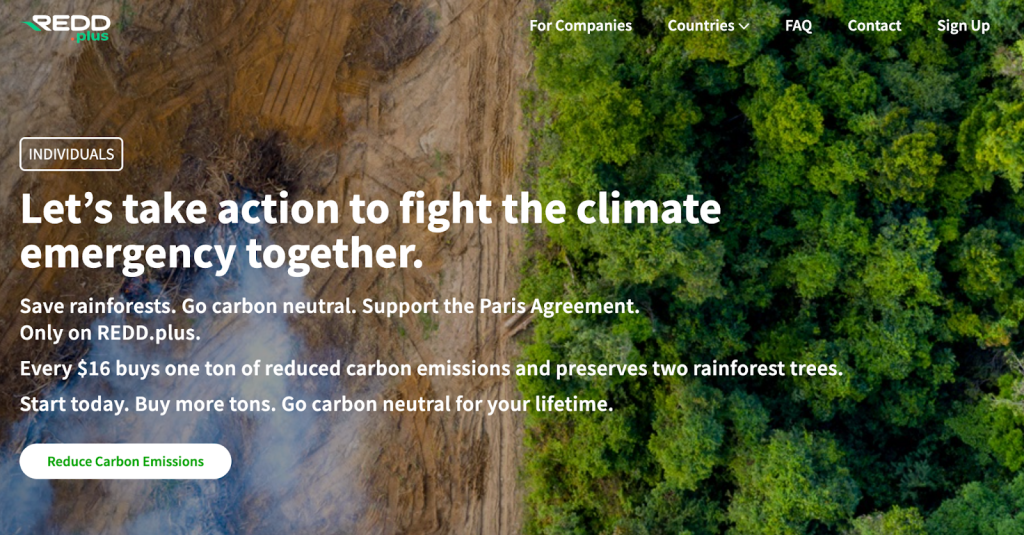
REDD.plus was founded by the Coalition for Rainforest Nations to give individuals and businesses the ability to purchase carbon emissions reductions generated by verified REDD+ projects. Today, they manage the creation of and platform on which REDD+ carbon credits are sold in order to reduce deforestation and prevent further degradation.
“Let’s take action to fight the climate emergency together”
REDD.plus
Project overview: REDD.plus is a project of the Coalition for Rainforest Nations, which consists of over 50 rainforest nations. The basis of REDD.plus is the REDD+ Result Unit (RRU), which is a type of carbon credit. A country’s national government develops a REDD+ strategy, the results of which are independently verified and published on a central hub. Serialized RRUs can then be purchased on the REDD.plus platform or CBL markets. Every RRU purchased saves 2 rainforest trees, and over 90% of your purchase goes back to the countries and local communities that are protecting rainforests around the world.
Carbon offset effectiveness: A country’s national government issues each RRU to prevent leakage and double-counting, REDD+ results are independently verified and published on the UNFCCC Info Hub, and each RRU is retired once it has been sold.
Carbon offset costs: Each RRU costs $16 and offsets 1 ton of CO2 emissions. RRUs are available for purchase as a one-time or monthly purchase.
How to get your carbon offsets: You can visit the REDD.plus website to purchase your RRUs.
Sustainable Travel International: Restoring Indonesian Peat Swamp Forests
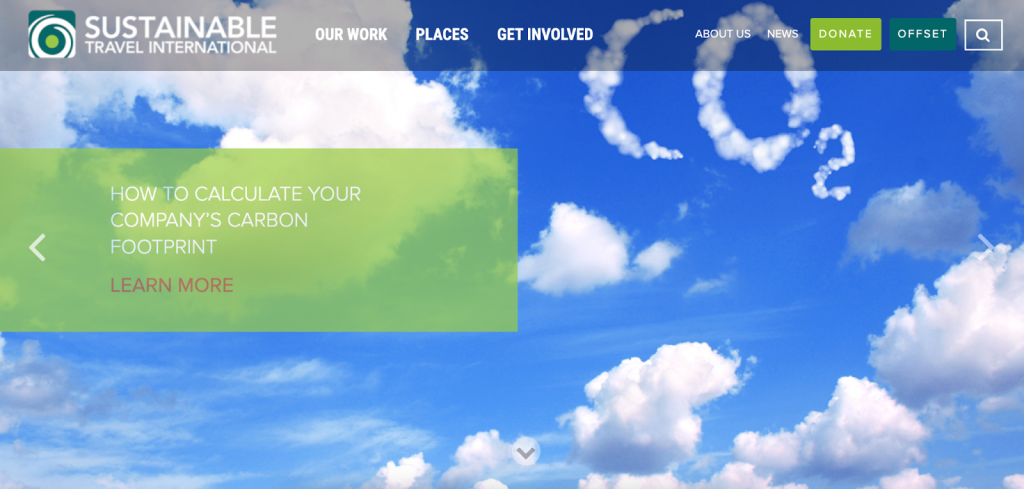
Sustainable Travel International was founded in 2002 by Brian Mullis to transform tourism’s impact on nature and communities by protecting and conserving this planet’s most vulnerable destinations. Today, they have helped individuals and companies offset over 386,309 metric tons (over 386 million kg) of CO2 and have supported various carbon offset projects.
“We’re dedicated to minimizing the negative impacts of tourism and maximizing its positive benefits for people, cultures, nature, and wildlife around the globe”
Sustainable Travel International
Project overview: Sustainable Travel International supports the Katingan Mentaya Blue Carbon Project. This project protects and restores 370,000+ acres of peat swamp forest in Kalimantan, Borneo, one of the largest remaining intact peat swamp forests in Indonesia. The area is also home to 14 endemic species and contains 5% of the world’s remaining Borneo orangutan, proboscis monkey, and Borneo white-bearded gibbons species.
Carbon offset effectiveness: The Katingan Mentaya Blue Carbon Project is certified by the Verified Carbon Standard and the Climate, Community, and Biodiversity Standard.
Carbon offset costs: It costs $16 per 1,000kg of CO2 offset.
How to get your carbon offsets: You can visit their website to purchase your travel, individual, or business carbon offsets.
DelAgua: Experts in Carbon Development Projects
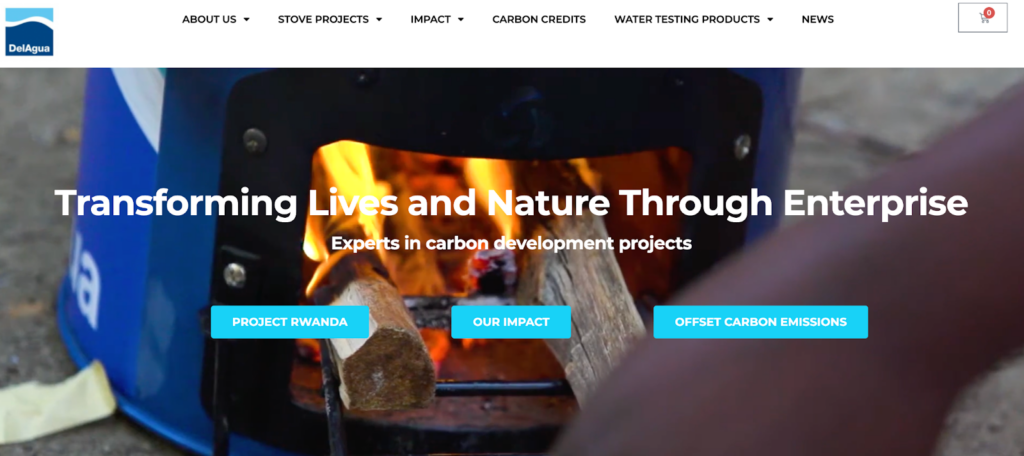
DelAgua was founded in 1985 as a water testing company aimed at providing clean water to rural African communities. Today, their water testing kit is used in 150+ countries and they offer carbon credits from a pioneer Rwandan clean cookstoves project.
“Transforming lives and nature through enterprise”
DelAgua
Carbon offset overview: DelAgua launched the Rwandan clean cookstoves project in partnership with the Government of Rwanda in 2013 to transform the lives and environment of rural African communities. To date, the project has provided over 6 million Rwandans with 1.3 million stoves, free of charge. The stoves use small twigs and branches, which people can collect without cutting down trees, thereby reducing deforestation and using 71% less wood than a traditional fire. It is one of the largest programs of its kind which has helped pull families from poverty and avoid CO2 emissions.
Carbon offset effectiveness: Del Agua’s carbon offset projects are certified by the Verified Carbon Standard. They are also aligned with the Paris Agreement and adhere to multiple UN Sustainable Development Goals.
Carbon offset costs: Costs are determined after initial contact.
How to get your carbon offsets: You can visit DelAgua’s website and contact a representative to get your energy-efficiency carbon offsets.
Wildlife Works: A Market-Based Conservation Model
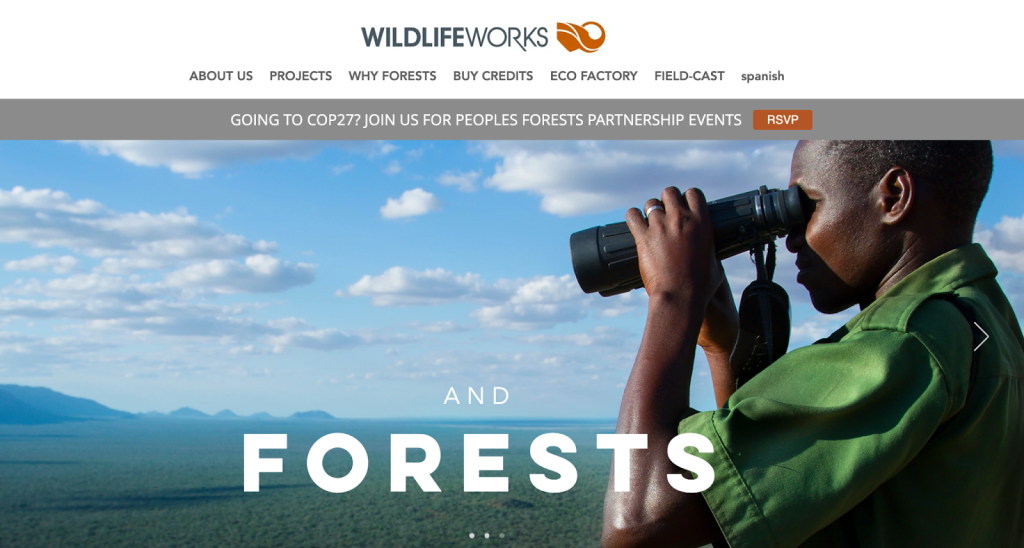
Wildlife Works was founded in 1997 by Mike Korchinsky to help communities transition from extraction-based to conservation-based livelihoods. Today, they develop and manage REDD+ projects in Kenya, Cambodia, and Colombia to combat deforestation and create sustainable livelihoods.
“Biodiversity-driven. Community-centered. Ecosystem-based.”
Wildlife Works
Project overview: Wildlife Works has developed the Kasigau Corridor, Mai Ndombe, and Southern Cardamom REDD+ projects in Kenya, Cambodia, and Colombia, respectively. Altogether, they protect over 2.4 million acres of rainforest and create jobs and other livelihoods other than poaching and deforestation.
Carbon offset effectiveness: The Kasigau Corridor project is verified by the CCBS at gold level, the Mai Ndombe project is verified by Verra, and the Southern Cardamom project is verified by Verra and the CCBS at gold level. Each of the 3 projects also adheres to multiple UN Sustainable Development Goals.
Carbon offset costs: Carbon offsets cost approximately $20 per ton of CO2.
How to get your carbon offsets: You can visit Wildlife Works’ webpage to view their REDD+ projects and purchase your carbon credits.
South Pole: Providing the Tools to Achieve a Low-Carbon Reality
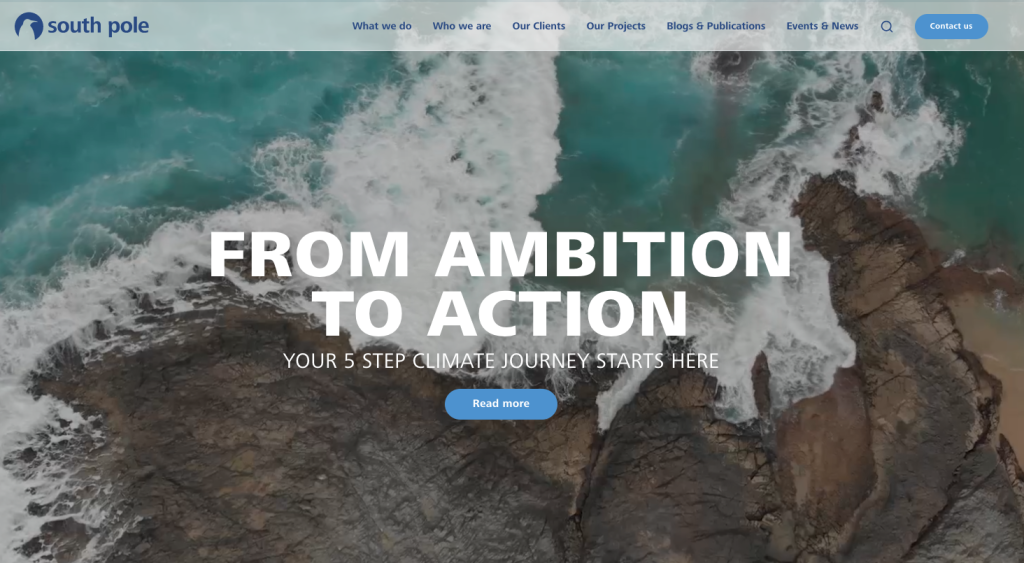
South Pole was founded in 2006 by 5 graduate students from the Swiss Federal Institute of Technology (ETH) as a platform to confront climate change. Today, they offer a wide variety of climate solutions including carbon offsets, environmental credits, and renewable energy credits (RECs).
“From ambition to action”
South Pole
Carbon offset overview: South Pole has a portfolio of over 700 verified carbon offset projects involving energy efficiency, biodiversity, clean water, and renewable energy. Examples of energy-efficiency projects include WWF Nature Clean Cookstoves in China, Bamako Clean Cookstoves in Mali, and Efficient Cookstoves in Rwanda.
And in terms of blue carbon, they support the Rimba Raya Biodiversity Preserve and Muskitia blue carbon project. Rimba Raya protects over 200,000 acres of tropical peat swamp, preserves crucial habitats, and avoids the deforestation of over 100,000 acres of forests. Muskitia protects 5,000 ha (120,000 ac) of mangroves and prevents 62,500 tons of CO2 from being released into the atmosphere.
Carbon offset effectiveness: South Pole’s carbon offset projects are certified by either the Verified Carbon Standard, Gold Standard, American Carbon Registry, or Climate Action Reserve. They are also aligned with the Paris Agreement and the United Nations Sustainable Development Goals.
Carbon offset costs: Costs are determined after initial contact.
How to get your carbon offsets: You can visit South Pole’s website and contact a representative to get your energy-efficiency carbon offsets.
InfiniteEARTH: The Rimba Raya Biodiversity Reserve Project
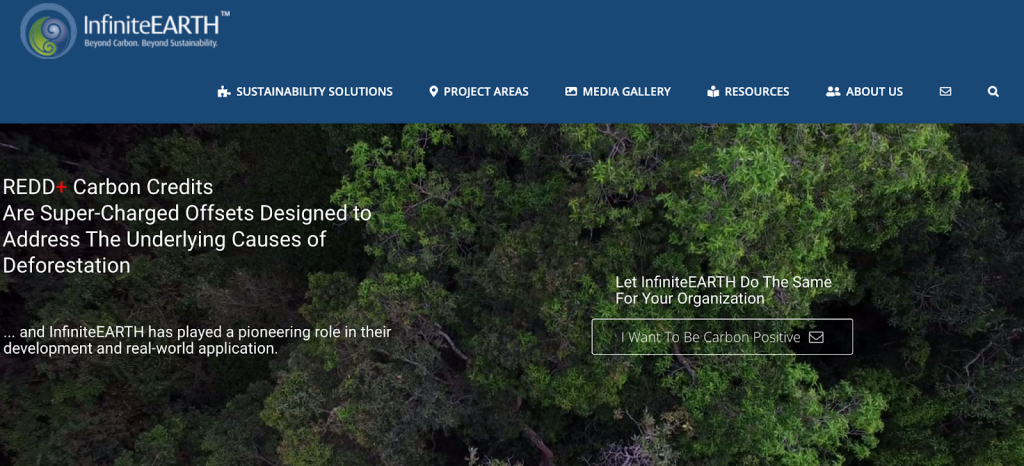
InfiniteEARTH was founded in 2008 by Todd Lemons and Jim Procanik to develop economically viable climate change solutions in order to preserve endangered species’ habitats, forests, and national parks. Today, they offer REDD+ carbon credits that fund forest and wildlife conservation in Indonesia.
“Beyond carbon. Beyond sustainability.”
InfinteEARTH
Project overview: InfiniteEARTH offers REDD+ carbon credits, the sale of which goes towards wildlife and forest conservation. Their flagship project, the Rimba Raya Biodiversity Reserve project, protects 47,000 ha (116,000 ac) of tropical peat forest on the southern coast of Borneo, an island in Asia. Combating deforestation and conserving wildlife in the peat forests generates carbon credits.
Carbon offset effectiveness: InfiniteEARTH offers triple gold certified REDD+ carbon credits on a wholesale basis for organizations looking to reduce their carbon footprint. Their Rimba Raya Biodiversity Reserve project is validated under the Verified Carbon Standard and the Climate Community and Biodiversity Alliance Standard (CCBA). It also adheres to all of the 17 UN Sustainable Development Goals.
Carbon offset costs: Costs are determined after initial contact.
How to get your carbon offsets: You can chat with a representative to get your carbon offsets.
Ecologi: A Global Carbon Offset Portfolio
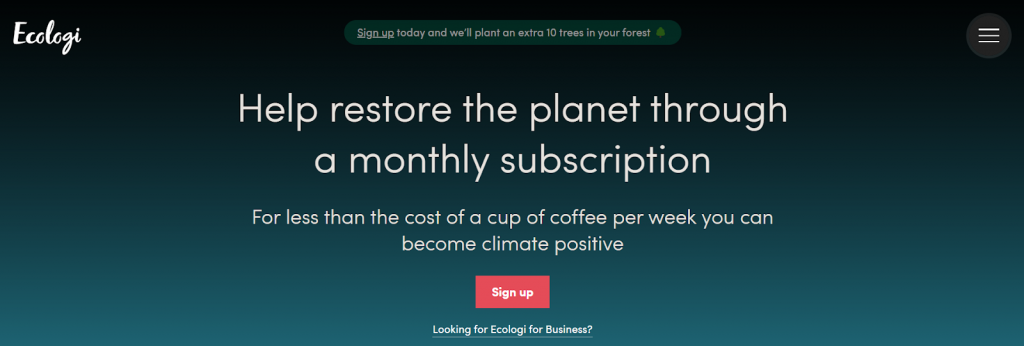
Ecologi was founded in 2019 by Elliot Coad, Lucy Jack, and Alex Price as an answer to the question “What if I put the money from my morning coffee into climate action”? Today, they have funded over 57 million trees, avoided over 2 million tons of carbon, and continue to enable everyday people to tackle the current climate crisis via reforestation and carbon offsetting projects.
“For less than the cost of a cup of coffee per week, you can become climate positive.”
Ecologi
Project overview: Ecologi supports energy efficiency, reforestation, methane capture, blue carbon, and renewable energy projects globally. Examples of energy-efficiency projects include: distributing cleaner cookstoves in Kenya, high-efficiency cookstoves in Tanzania, cleaner cookstoves in Zambia and Ghana, and fuel-efficient cookstoves in Honduras.
Carbon offset effectiveness: Ecologi’s carbon offsetting projects are certified by either the Gold Standard or the Verified Carbon Standard. And they also have an interactive Google sheet where you can check when, where, and how many trees are planted through their platform.
Carbon offset costs: It costs approximately $6.04 per 1,000 kg of CO2 offset. Ecologi has a personal offset plan where you choose how many trees get planted (12, 24, or 48) for a price ($10.50, $21, or $42 per month).
How to get your carbon offsets: You can visit Ecologi’s website to select your personal carbon offset plan and get your energy-efficiency carbon offsets.
Biofilica: Protecting the Brazilian Amazon Rainforest
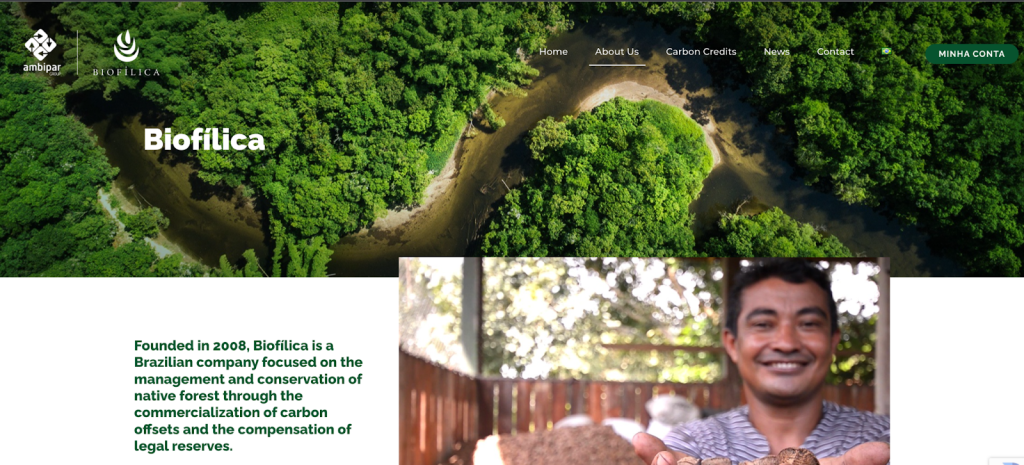
Biofilica was founded in 2008 by Plínio Ribeiro, Claudio Pádua, and Juscelino Martins to conserve forests through carbon offset commercialization and legal reserve compensation. Today, they combat deforestation in six major areas of the Brazilian Amazon rainforest, one of our planet’s main carbon sinks.
“We are a Brazilian company focused on native forest conservation through the commercialization of environmental services.”
Biofilica
Project overview: Biofilica identifies areas of the Brazilian Amazon rainforest that are facing deforestation and invests in practices to manage and conserve them. They offer 6 REDD+ projects which focus on different areas of the Brazilian Amazon rainforest: Jari Pará, Jari Amapá, RESEX Jacundá, Manoa, Jaruá, and Jutaituba projects.
Carbon offset effectiveness: Biofilica’s REDD+ projects contribute to multiple UN Sustainable Development Goals, and are certified by the Verified Carbon Standard and the Climate, Community, and Biodiversity Standards.
Carbon offset costs: Costs are determined after initial contact.
How to get your carbon offsets: You can visit Biofilica’s website to get in touch with their business team.
myclimate: Blue Forests for Coral Reef Protection
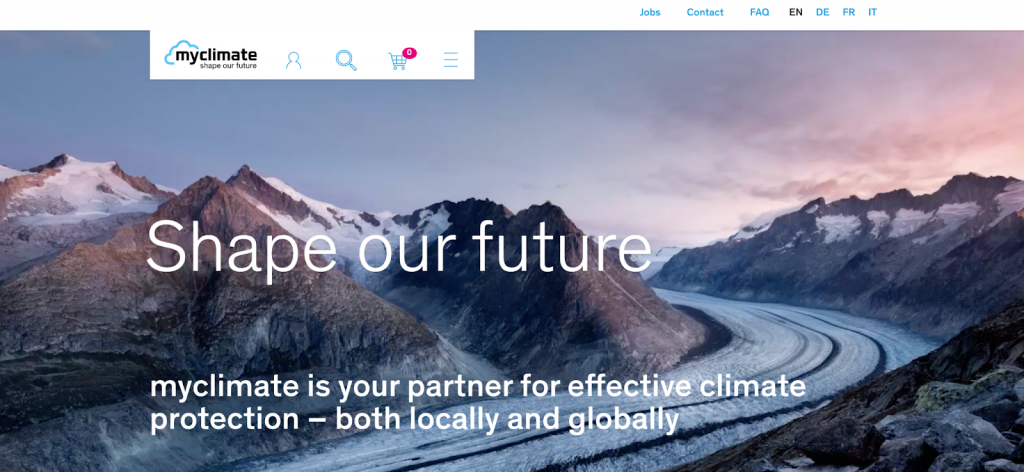
myclimate was founded in 2002 by Renat Heuberger, Thomas Camerata and Patrick Bürgi as an international climate organization with Swiss roots. Today, they have expanded to 45 countries and work with companies of all sizes, public administrations, non-profit organizations, and private individuals to provide high-quality carbon offset projects with quantifiable climate protection.
“myclimate is your partner for effective climate protection – locally and globally”
Myclimate
Carbon offset overview: myclimate provides a variety of carbon offsets for individuals. Specifically, they support the Blue Forests for Coral Reef Protection in Madagascar project, which protects over 2,400 acres of mangrove forests and restores degraded areas.
Carbon offset effectiveness: myclimate projects are certified according to either the Gold Standard, Verified Carbon Standard, or Plan Vivo and contribute to the UN’s Sustainable Development Goals.
Carbon offset costs: It costs approximately $30 per 1,000kg of CO2 offset for an individual carbon offset and $23 per 1,000kg of CO2 offset for a monthly, quarterly, or annual offset subscription.
How to get your carbon offsets: You can visit their website to learn more about the mangrove project and to purchase your carbon offsets.
How Effective and Efficient Are Carbon Reduction Offsets
In terms of effectiveness, carbon reduction offsets help reduce deforestation, strengthen our natural carbon sinks, bolster energy security, and aid in the transition away from fossil fuels. However, they can also lack additionality and permanence. They also do not reduce your own carbon emissions, which can lead to greenwashing.
In terms of efficiency, carbon reduction offsets chiefly preserve existing terrestrial and marine ecosystems, promote energy decentralization, and are relatively cost-effective. However, they may only reduce CO2 emissions during their project life span, have a high rate of carbon re-emission, and lack standardization and monitoring.
Carbon reduction offsets are effective at mitigating climate change because:
- Carbon reduction offsets involving REDD+, energy-efficiency, and blue carbon combat deforestation and reinforce our terrestrial and marine carbon sinks.
- Carbon reduction offsets involving energy efficiency can help reduce reliance on biomass and fossil fuels, leading to increased energy security and energy independence.
However, carbon reduction offsets can also lack effectiveness because
- Carbon reduction offsets involving REDD+ and energy efficiency can lack additionality and permanence.
- Carbon reduction offsets involving REDD+, energy efficiency, and blue carbon do not reduce your own carbon emissions, which can lead to greenwashing.
Carbon reduction offsets are efficient at reducing CO2 emissions because:
- Carbon reduction offsets involving energy efficiency promote energy decentralization.
- REDD+ offsets preserve existing terrestrial and marine ecosystems.
- Carbon reduction offsets involving REDD+, energy efficiency, and blue carbon are some of the most cost-effective methods of carbon emission reduction.
However, carbon reduction offsets can also lack efficiency because:
- REDD+ offsets avoid emissions only during project lifespans.
- Carbon reduction offsets involving energy efficiency and blue carbon can lack standardization and monitoring due to a variety of factors.
What Are The 6 Pros and 5 Cons of Carbon Reduction Offsets
Carbon reduction offsets reduce deforestation and strengthen our natural carbon sinks, bolster energy security and help transition away from fossil fuels, promote energy decentralization, help maintain water quality, preserve biodiversity, and are relatively cost-effective.
Carbon reduction offsets can lack additionality, permanence, standardization, and monitoring. In addition, identifying the baseline for REDD+ projects can be inaccurate, and carbon reduction offsets do not reduce your own carbon emissions, which can lead to greenwashing.
What Are the 6 Pros of Carbon Reduction Offsets
Carbon reduction offsets reduce deforestation and strengthen our natural carbon sinks, bolster energy security, help transition away from fossil fuels, promote energy decentralization, help maintain water quality, preserve biodiversity, and are relatively cost-effective.
| 6 Pros of Carbon Reduction Offsets | Quick Facts |
| #1: Carbon reduction offsets reduce deforestation and strengthen our natural carbon sinks | Carbon reduction offsets involving REDD+, energy-efficiency, and blue carbon combat deforestation and reinforce our terrestrial and marine carbon sinks. |
| #2: Carbon reduction offsets bolster energy security and help transition away from fossil fuels | Carbon reduction offsets involving energy efficiency can help reduce reliance on biomass and fossil fuels, leading to increased energy security and energy independence. |
| #3: Carbon reduction offsets promote energy decentralization | Carbon reduction offsets involving energy efficiency promote energy decentralization. |
| #4: Carbon reduction offsets help maintain water quality | Carbon reduction offsets involving REDD+ and blue carbon bolster terrestrial and marine ecosystems, which play an important role in maintaining water quality. |
| #5: Carbon reduction offsets preserve biodiversity | Carbon reduction offsets involving REDD+ and blue carbon bolster our terrestrial and marine ecosystems, which act as habitats for vast numbers of marine plant and animal species. |
| #6: Carbon reduction offsets are relatively cost-effective | Carbon reduction offsets involving REDD+, energy efficiency, and blue carbon are some of the most cost-effective methods of carbon emission reduction. |
What Are the 5 Cons of Carbon Reduction Offsets
Carbon reduction offsets can lack additionality, permanence, standardization, and monitoring. In addition, identifying the baseline for REDD+ projects can be inaccurate, and carbon reduction offsets do not reduce your own carbon emissions, which can lead to greenwashing.
| 5 Cons of Carbon Reduction Offsets | Quick Facts |
| #1: Carbon reduction offsets can lack additionality | Carbon reduction offsets involving REDD+ and energy efficiency can lack additionality. |
| #2: Carbon reduction offsets can lack permanence | Carbon reduction offsets involving REDD+ and blue carbon lack permanence because they are reversible, nature-based solutions. |
| #3: Identifying the baseline for REDD+ projects can be inaccurate | It is impossible to calculate the REDD+ baseline with absolute certainty, which can lead to an overestimation of carbon emissions reductions and overissuance of carbon credits. |
| #4: Carbon reduction offsets can lack standardization and monitoring | Carbon reduction offsets involving energy efficiency and blue carbon can lack standardization and monitoring due to a variety of factors. |
| #5: Carbon reduction offsets do not reduce your own carbon emissions, which can lead to greenwashing | If emissions are only offset and not reduced from the source, this could lead to greenwashing, when the consumer is deceived into thinking they are offsetting their emissions but in reality, they are not. |
How Can Carbon Reduction Offsets Help Mitigate Climate Change
Climate change is a severe and long-term consequence of fossil fuel combustion. Carbon reduction offsets can help mitigate climate change because they reduce atmospheric carbon levels. If left untreated, carbon can remain in our atmosphere for tens of thousands of years and exacerbate the negative effects of climate change.
How is Climate Change Defined
Climate change is arguably the most severe, long-term global impact of fossil fuel combustion. Every year, approximately 33 billion tons (bt) of CO2 are emitted from burning fossil fuels. The carbon found in fossil fuels reacts with oxygen in the air to produce CO2.
“Climate change: changes in the earth’s weather, including changes in temperature, wind patterns and rainfall, especially the increase in the temperature of the earth’s atmosphere that is caused by the increase of particular gasses, especially carbon dioxide.”
Oxford Dictionary
Atmospheric CO2 fuels climate change, which results in global warming. When CO2 and other air pollutants absorb sunlight and solar radiation in the atmosphere, it traps the heat and acts as an insulator for the planet. Since the Industrial Revolution, Earth’s temperature has risen a little more than 1 degree Celsius (C), or 2 degrees Fahrenheit (F). Between 1880-1980 the global temperature rose by 0.07C every 10 years. This rate has more than doubled since 1981, with a current global annual temperature rise of 0.18C, or 0.32F, for every 10 years.
As outlined in the 2015 Paris Climate Agreement, we must cut current GHG emissions by 50% by 2030 and reach net zero by 2050.
How Do Carbon Offsets Generally Help Mitigate Climate Change
Levels of carbon in our atmosphere that cause climate change have increased as a result of human emissions since the beginning of the Industrial Revolution in 1750. The global average concentration of carbon dioxide in the atmosphere today registers at over 400 parts per million. Carbon offsets can help prevent these levels from increasing even more.
When you hear the words “carbon offset”, think about the term “compensation”. Essentially, carbon offsets are reductions in GHG emissions that are used to compensate for emissions occurring elsewhere.
Carbon offsets that meet key criteria and verified project standards, are additional and permanent, and are part of projects that are carried out until the end of their lifespan have the best chance of reducing carbon emissions and therefore reducing climate change.
When we offset CO2 we also slow the rate of global temperature rise, which in turn minimizes the effects of climate change.
As outlined in the 2015 Paris Climate Agreement, we must cut current greenhouse gas (GHG) emissions by 50% by 2030 and reach net zero by 2050. Carbon reduction is important to meet these targets because it lowers the amount of carbon in our atmosphere, which can remain in our atmosphere for tens of thousands of years.
How Do Carbon Reduction Offsets Specifically Help Mitigate Climate Change
REDD+ offsets specifically help mitigate climate change because they protect terrestrial forests, which remove CO2 from the air as they grow. By slowing deforestation rates, we can maintain the amount of carbon they are capable of storing. The more carbon our forests can sequester, the less carbon there is in our atmosphere.
Energy-efficiency offsets specifically help mitigate climate change by reducing CO2 emissions from direct fossil fuel combustion and from indirect electricity generation. By using energy-efficient appliances and methodologies, we reduce the amount of CO2 entering our atmosphere.
Blue carbon offsets specifically help mitigate climate change because they protect coastal and marine ecosystems, which are capable of absorbing more CO2 per acre than rainforests and at a rate 10x greater.
Final Thoughts
Carbonfund, REDD.plus, and Sustainable Travel International are the best carbon reduction offsets. DelAgua, Wildlife Works, South Pole, InfiniteEARTH, Biofilica, and myclimate also offer projects involving REDD+, energy efficiency, and blue carbon.
But for all of the good carbon reduction offsets can instigate, they should not be seen as the only solution to climate change. They are effective at reducing CO2 in the short term, but in the long term, they fail to reduce CO2 enough.
When used in conjunction with direct CO2 reduction measures, carbon offsetting can be much more effective. We should reduce our own carbon footprint as much as possible first, and only then choose the most effective carbon reduction offsets.
Stay impactful,

Sources
- U.S. Environmental Protection Agency: Offsets and RECs -What’s the Difference?
- Britannica: Carbon Offset
- David Suzuki Foundation: Are carbon offsets the answer to climate-altering flights?
- SaveMoneyCutCarbon: Carbon reduction vs. carbon offset – what’s the difference?
- Reverse Carbon: The difference between reduced/avoided emissions and carbon removal
- Impactful Ninja: What Are REDD+ Carbon Offsets and How Do They Work
- Impactful Ninja: What Are Energy Efficiency Carbon Offsets and How Do They Work
- Impactful Ninja: What Are Blue Carbon Offsets and How Do They Work
- Impactful Ninja: What Are Carbon Reduction Offsets and How Do They Work? The Big Picture
- Carbonfund: Homepage
- ClimeCo: Homepage
- Carbonfund: About Us
- Carbonfund: Our Energy Efficiency Projects
- Carbonfund: Kenya Burn Stoves Project
- Carbonfund: Aqua Clara Water Filtration Programme
- Carbonfund: South Korea Waste Energy Co-Generation Project
- Carbonfund: Truck Stop Electrification Project
- Carbonfund: The Purus Project
- Carbonfund: The Russas-Valparaiso Project
- Carbonfund: The Envira Amazonia Project
- The Gold Standard: Homepage
- Verified Carbon Standard: Homepage
- American Carbon Registry: Homepage
- Climate, Community and Biodiversity Standard: Homepage
- Carbonfund: For Individuals
- Carbonfund: Become a Small Business Partner
- Carbonfund: Become a Large Business Partner
- REDD.plus: Homepage
- REDD.plus: FAQ and Help Center
- Coalition for Rainforest Nations: Homepage
- United Nations Framework Convention on Climate Change: Info Hub – REDD+
- Xpansiv: Homepage
- REDD.plus: Corporations
- REDD.plus: Individuals
- Sustainable Travel International: Homepage
- Sustainable Travel International: About Us
- Sustainable Travel International: Carbon Offsets
- Sustainable Travel International: Blue Carbon Offset Projects
- Sustainable Travel International: offset by amount
- DelAgua: Homepage
- DelAgua: Project Rwanda
- DelAgua: Carbon Credits
- United Nations Convention Framework on Climate Change: The Paris Agreement
- United Nations Department of Economic and Social Affairs: The 17 Goals
- Wildlife Works: Homepage
- Wildlife Works: History
- Wildlife Works: Wildlife Works REDD+ Projects Around the World
- Wildlife Works: Wildlife Works Kasigau Corridor Kenya REDD+ Project
- Wildlife Works: Mai Ndombe Wildlife Works REDD+ Developer
- Wildlife Works: Cambodia S. Cardamoms
- Wildlife Works: Wildlife Works and the Sustainable Development Goals
- Wildlife Works: Buy Credits
- South Pole: Homepage
- South Pole: WWF Clean Cookstoves
- South Pole: Bamako Clean Cookstoves
- South Pole: Efficient Cookstoves
- South Pole: Climate Action Projects
- South Pole: South Pole has developed over 700 climate action projects
- South Pole: Muskitia Blue Carbon
- South Pole: Rimba Raya Biodiversity Preserve
- Climate Action Reserve: Homepage
- South Pole: Contact the Team
- InfiniteEarth: Homepage
- InfiniteEarth: About InfinteEARTH
- InfiniteEarth: Rimba Raya Biodiversity Reserve
- InfiniteEarth: Purchase Carbon Credits
- Ecologi: Homepage
- Ecologi: Your Plan
- Ecologi: Reforestation and Carbon Offset Projects
- Eden Reforestation Projects: Homepage
- One Tree Planted: Homepage
- Trees for the Future: Homepage
- Impactful Ninja: Best Charities for Reforestation
- Ecologi: Ecologi Public Impact and Operations Ledger
- Ecologi: Distributing cleaner cookstoves in Kenya
- Ecologi: High efficiency cookstoves in Tanzania
- Ecologi: Cleaner cookstoves in Zambia and Ghana
- Ecologi: Fuel efficient cookstoves in Honduras
- Biofilica: Biofilica Ambipar Environments
- Biofilica: Institutional – Biofilica Ambipar Environment
- Biofilica: Carbon Credits – Jari Pará REDD+ Project
- Biofilica: Carbon Credits – Jari Amapá REDD+ Project
- Biofilica: Carbon Credits – RESEX Jacundá REDD+ Project
- Biofilica: Carbon Credits – Manoa REDD+ Project
- Biofilica: Carbon Credits – Jaruá REDD+ Project
- Biofilica: Carbon Credits – Jutaituba REDD+ Project
- Biofilica: Carbon Credits – REDD+ Projects in the Amazon
- myclimate: Homepage
- myclimate: About myclimate
- myclimate: Blue Forests for Coral Reef Protection in Madagascar
- Plan Vivo: Homepage
- United Nations Department of Economic and Social Affairs: The 17 Goals
- Myclimate: Calculate your flight emissions
- myclimate: Carbon Offset Subscriptions
- Client Earth: What is a Carbon Sink?
- International Energy Administration: Energy Security
- US Environmental Protection Agency: Summary of the Energy Independence and Security Act of 2007
- Carbon Offset Guide: Additionality
- Carbon Offset Guide: Permanence
- United States Environmental Protection Agency: Distributed Generation of Electricity and its Environmental Impacts
- Impactful Ninja: Carbon Reduction Offsets: All 6 Pros and 5 Cons Explained
- Impactful Ninja: How Effective and Efficient Are Carbon Reduction Offsets? Here Are the Facts
- Edie: Carbon offsetting – How are businesses avoiding greenwashing on the road to net-zero?
- World Nuclear Association: Carbon Emissions from Electricity
- Natural Resources Defense Council: Global Warming 101
- myclimate: What does “net zero emissions” mean?
- National Oceanic and Atmospheric Administration: Climate Change – Atmospheric Carbon Dioxide
- Terrapass: Carbon Offset Projects




